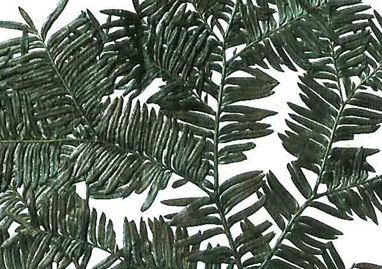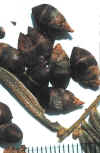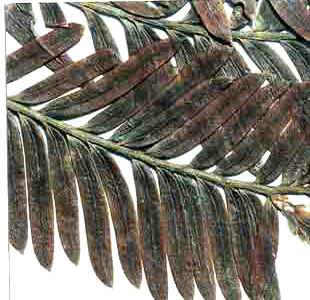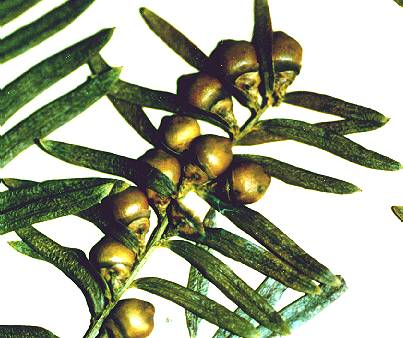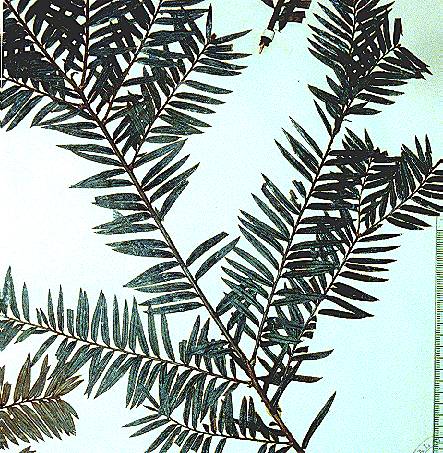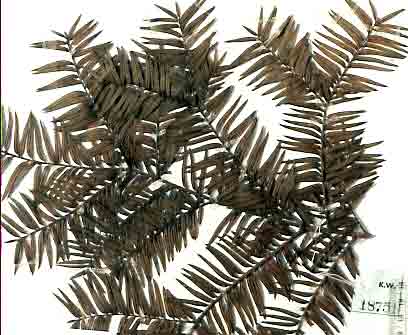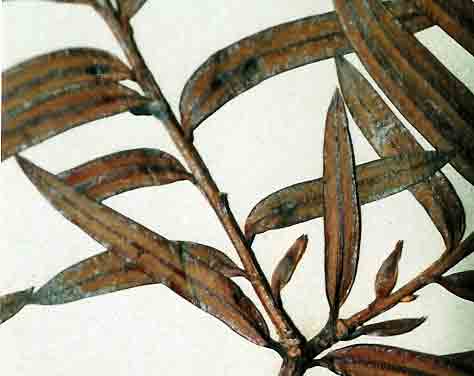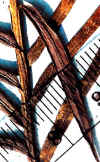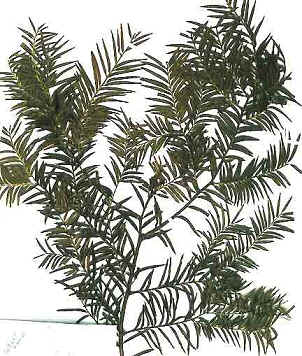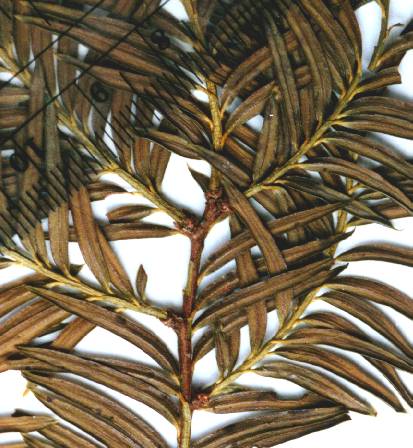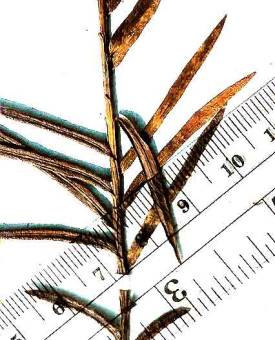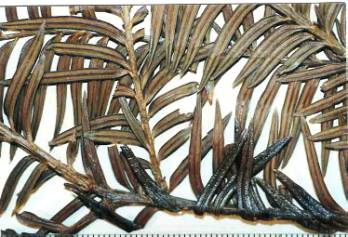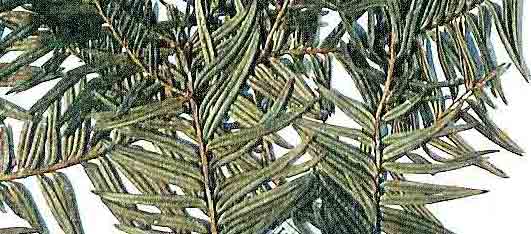|
1.
Dried leaves rusty orange, at least near 1.
Dried leaves green to reddish, or discolored |
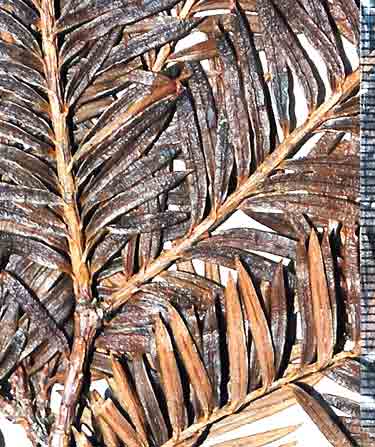 |
|
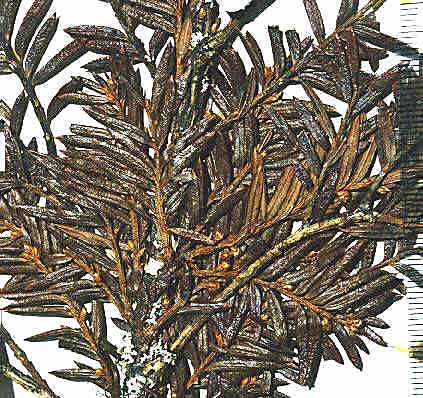
Figs. 5962. Taxus kingstonii. Fig, 59 (top right): from Yunnan, Forrest (A). Fig. 60-61 (left and center right): from Taiwan, Wilson 9738 (A), holotype. Fig. 62 (lower right): from Khasi Hills, India, Mann (P). Note how the leaves twist and curve as they spread from branchlets, the color contrast between upper (dark green) and lower (yellowish orange) surfaces, and the slightly convex upper surface. |

|
|
|
2.
Leaves obtuse to acute (Fig 67), |
Fig. 63 Taxus mairei var. mairei: from Guangxi, China, Wang-Te-Hui 445 (A), note isodichotomous branching |
|

